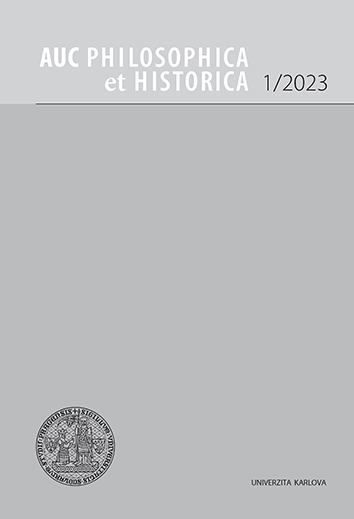AUC Philosophica et Historica (Acta Universitatis Carolinae Philosophica et Historica) is a multidisciplinary academic journal focused on the humanities with more than 50 years of tradition.
The journal is indexed in CEEOL, DOAJ, and EBSCO.
AUC PHILOSOPHICA ET HISTORICA, Vol 2020 No 2 (2020), 195–205
Japan and Modern Architecture, 1945–1970. Discourse in the mid-20th-century Europe. 1960s: Emancipation, Criticism
Ondřej Hojda
DOI: https://doi.org/10.14712/24647055.2021.8
published online: 02. 08. 2021
abstract
This text is based on a section from the author’s dissertation titled Japan and Modern Architecture, 1945–1970. Discourse in the mid-20th-century Europe, examining the ideas about Japanese architecture in Western, mainly European discourse between 1945 and 1970. The dissertation maps the discourse on Japan from a comparative perspective. Building on sources from different countries, it identifies the main topics that were associated with Japan in the architectural context and shows their broader significance in the global architectural debate. It deals with the image of another culture: the focus is on both the history of ideas and visual representations, mainly photography. The sources are mostly printed media: architectural magazines and books on architecture in Western languages: English, German, French, Italian, Norwegian and Czech. What follows are excerpts from chapter II.6. of the original dissertation thesis. They introduce the change in perception of Japan that followed after 1960, and a case study of the writings on Japan by Bernard Rudofsky.
keywords: 20th Century architecture; architecture after World War II; Japanese architecture; Europe-Japan relationships in art and architecture; Bernard Rudofsky
references (14)
1. Architectural Design, May 1965.
2. Architekturzentrum Wien, Monika Platzer (eds.), Lessons from Bernard Rudofsky. Life as a Voyage, Basel 2007.
3. Ruth Benedict, Chrysanthemum and the Sword, Boston 1946.
4. Jeremy Dodd, 'Japanese Architecture Today,' Architectural Design, May 1965, p. 216.
5. Andrea Bocco Guarneri, Bernard Rudofsky: A Humane Designer, Wien - New York 2003.
6. Fumihiko Maki. 'Group Form.' Werk 7 (1963), pp. 258-263.
7. MoMA Press release, June 3, 1961, available at https://www.moma.org/documents/moma_press-release_326237.pdf, retrieved 31. 7. 2017.
8. Bernard Rudofsky, Architecture Without Architects. A Short Introduction to Non-Pedigreed Architecture, New York 1964.
9. Bernard Rudofsky, 'Introduzione al Giappone (I).' Domus 319 (June 1956), pp. 45-49.
10. Bernard Rudofsky, The Kimono Mind: An Informal Guide to Japan and the Japanese. New York 1965.
11. Felicity Scott, 'Underneath Aesthetics and Utility. The Untransposable Fetish of Bernard Rudofsky,' Assemblage 38 (1999), pp. 58-89. CrossRef
12. Felicity Scott, Disorientation: Bernard Rudofsky in the Empire of Signs, Berlin 2016.
13. Bruno Taut, Houses and People of Japan, Tokyo 1937.
14. Makoto Ueda, Kimono Mind (review), Pacific Affairs, 41(2) (1968), p. 286. CrossRef

Japan and Modern Architecture, 1945–1970. Discourse in the mid-20th-century Europe. 1960s: Emancipation, Criticism is licensed under a Creative Commons Attribution 4.0 International License.
